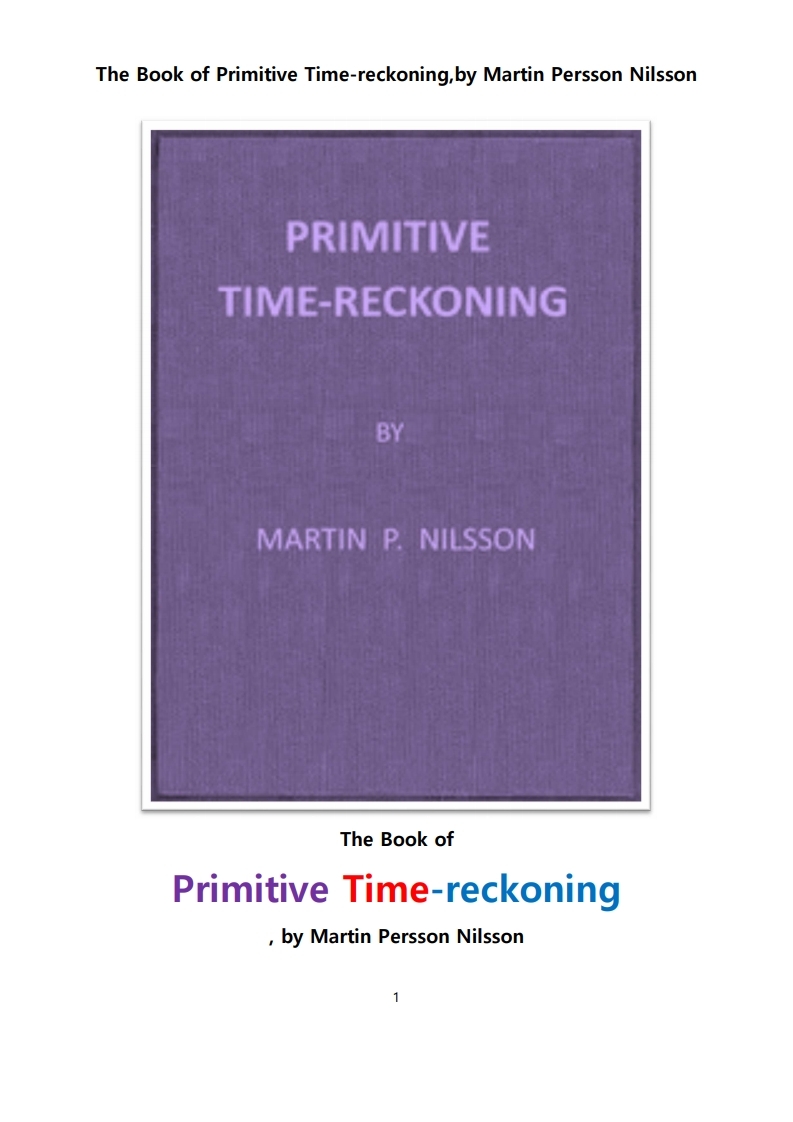CONTENTS.
PAGE
PREFACE V
INTRODUCTION 1
Foundation of the inquiry―Units of time-reckoning―Risings and settings of the stars―Phases
of climate, of plant and animal life―Modes of time-reckoning.
CHAPTER I.―THE DAY 11
CHAPTER II.―THE SEASONS 45
CHAPTER III.―THE YEAR 86
CHAPTER IV.―THE STARS 109
CHAPTER V.―THE MONTH 147
CHAPTER VI.―THE MONTHS 173
CHAPTER VII.―CONCLUSIONS 217
CHAPTER VIII.―OLD SEMITIC MONTHS 226
CHAPTER IX.―CALENDAR REGULATION. 1. THE INTERCALATION 240
CHAPTER X.―CALENDAR REGULATION. 2. BEGINNING OF THE YEAR 267
CHAPTER XI.―POPULAR MONTHS OF THE EUROPEAN PEOPLES 282
CHAPTER XII.―SOLSTICES AND EQUINOXES. AIDS TO THE DETERMINATION OF
TIME 311
CHAPTER XIII.―ARTIFICIAL PERIODS OF TIME. FEASTS 324
CHAPTER XIV.―THE CALENDAR-MAKERS 347
CHAPTER XV.―CONCLUSION 355
1. Summary of results. The concrete nature of time-indications―Discontinuous and ‘aoristic’
time-indications―The pars pro toto counting of the periods―The continuous time reckoning―Empirical intercalation of months―2. The Greek time-reckoning. Early Greek
time-reckoning―The Oktaeteris and the months―Sacral character of the Greek
calendar―Influence of Apollo and Delphi―Babylonian origin of the Greek calendar regulation.
ADDENDUM TO P. 78 NOTE 2 370
LIST OF AUTHORITIES QUOTED 371
INDEX 382
도서소개
저자소개
목차소개





